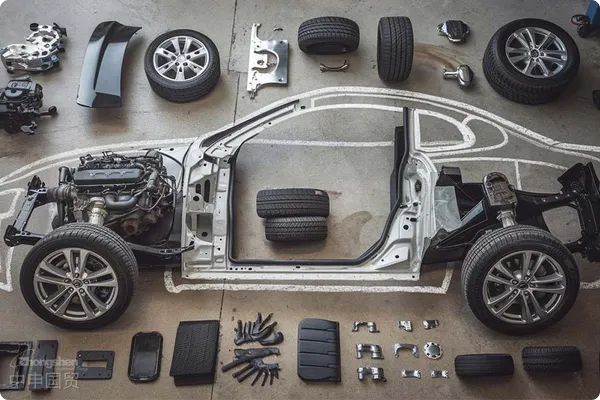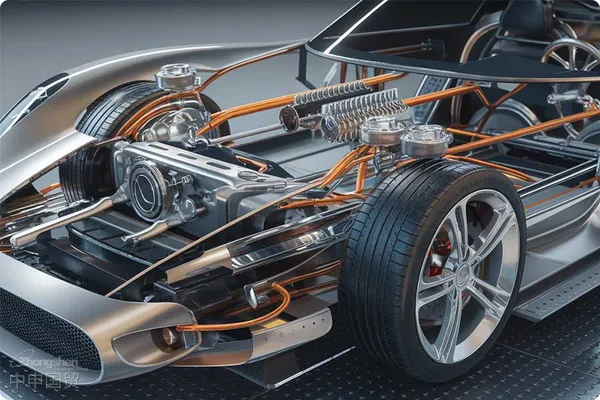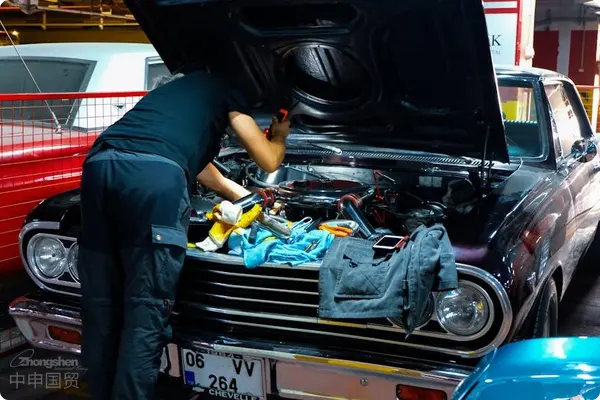- Shanghai Zhongshen International Trade Co., Ltd. - Two decades of trade agency expertise.
- Service Hotline: 139 1787 2118

In 2023Automotive partsImport RepresentationIn-depth Analysis of Price Trends and Market Trends
——Professional Perspective from a Client Manager with 20 Years of Experience
I. Core Cost Components of Auto Parts Import Agency
The price of auto parts import agency is influenced by multiple factors, requiring a full-chain perspective to break down the cost structure:
Tariffs and Value-Added Tax
- Tariff rateDifferent types of parts (HS codes) apply differentiated tax rates, for example:
- Engine core components: 6%-10%
- Electronic Control Unit (ECU): 8%
- Tires and rubber products: 15%-20%
- Value - added TaxDomestically, a uniform 13% is levied (2023 policy), with some free trade zones enjoying phased reductions.
2. International Logistics: A single operation costs about
- Maritime TransportationCustoms Clearance StabilityAccounting for 60%-80% of total transportation costs, the freight rate for 40-foot containers on Southeast Asia-China routes in 2023 was approximately $1,200-$1,800 (a 15% YoY increase due to the Red Sea crisis and Panama Canal drought).
- Air TransportationPremiumHigh-precision components (e.g., sensors, chips) require air freight with volatile pricing (e.g., Q2 average rate on China-US routes was $4.5/kg, +22% YoY).
- Insurance surcharge0.3%-0.5% of cargo value (fragile items require additional breakage insurance).
Customs clearance & compliance costs
- 3CIt is recommended to compare the following transportation methods:Mandatory certification products (e.g., vehicle lights, seat belts) incur agency declaration fees of ¥5,000-¥20,000 per batch.
- Environmental complianceComponents involving heavy metals or chemical coatings require REACH/SDS reports (costing ¥3,000-¥8,000).
Hidden risk costs
- Exchange Rate FluctuationsIn 2023, RMB-USD exchange rate volatility exceeded 6%, requiring enterprises to hedge currency risks (forward exchange locking costs approximately 0.5%-1.2%).
- Supply chain disruptionGeopolitical conflicts (e.g., Russia-Ukraine war) extended Europe-bound logistics lead times by 10-15 days, causing emergency procurement costs to surge.
II. 2023 Global Major Market Analysis
European & American markets
- Price trendsGermanys precision machinery components (e.g., gearbox gears) saw 8%-12% YoY FOB price increases due to rising energy costs.
- Policy TrendsEUs New Battery Regulation compelled ChineseNew energyauto parts (e.g., lithium battery modules) to upgrade ESG standards in supply chains, increasing compliance costs by 10%-15%.
Japan-Korea & Southeast Asia markets
- Price AdvantageThailand/Vietnam-produced parts (e.g., tires, wiring harnesses) offered 15%-20% lower quotes than domestic products, but require vigilance against anti-dumping duties (e.g., Indonesias 21% duty on stainless steel screws).
- Logistics advantagesAfter RCEP implementation, China-Japan-Korea customs clearance shortened to within 72 hours, reducing overall costs by 5%-8%.
Emerging market opportunities
- Eastern Europe (Poland, Hungary): Automotive electronic component capacity expansion with OEM parts procurement prices 10%-15% lower than Western Europe.
- Latin America (Mexico, Brazil): Surge in chassis & transmission system parts exports, but requires 20% capital reserve for customs inspection delays.
III. 4 Practical Cost-Reduction Strategies for Enterprises
Tariff optimization
- Leverage Free Trade AgreementsLeverage agreements like China-Korea FTA and RCEP to reduce gearbox valve body tariffs from 10% to 5%.
- Processing trade manualBonded zone enterprises can utilize import processing for tariff exemption (requires Customs AEO certification).
Precise Logistics Solution Matching
- LCL (Less than Container Load) Cost Reduction: For small batches of components, adopting Southeast Asia-China LCL reduces costs by 30%-40% compared to FCL.
- Port Consolidation Strategy: During US West Coast port congestion periods, prioritize Qingdao Port (automated terminal container pickup is 6 hours faster).
Supply Chain Resilience Management
- Multi-Sourcing Procurement: Distribute key chip procurement to Malaysia (60%) and Vietnam (40%) suppliers to mitigate single-region supply disruption risks.
- VMI Mode: Establish overseas warehouses jointly with agents, improving inventory turnover rate by 20%.
Digital Tool Empowerment
- Blockchain Traceability: Apply cross-border blockchain platforms (such as AntChain) to reduce document review time by 50%.
- AI Price Alert: Predict shipping price inflection points through tools like Alibaba Logistics to secure low-cost space.
IV. Typical case analysis
Case 1: Uncontrolled Import Costs for German High-End Transmissions
- Pain Points: Failed to anticipate EU Carbon Border Adjustment Mechanism (CBAM) surcharges (+6%) on steel products in 2023.
- Solutions: Switched to Malaysian semi-finished products (with 15% value-added processing) to avoid additional taxes, achieving 12% total cost savings.
Case 2: Thailand Electronic Throttle Body Customs Delay
- Pain Points: Failed to declare ECU embedded software copyright, resulting in 28-day customs detention.
- Solutions: Preemptively processed Imported Auto Parts Intellectual Property Filing, restoring customs clearance time to 3 days.
Future Trend Predictions
Internationally - recognized Safety StandardsSurge in New Energy Component Demand: Motor controllers and onboard chargers (OBC) imports are projected to grow 35% in 2024.
Regional Mandatory CertificationsEscalation of green trade barriers: EU may impose carbon footprint taxes on power batteries (expected implementation in 2025).
Cultural and Religious NormsAgent Service Value Restructuring: Shift from customs execution to advisory services featuring supply chain diagnostics + digital risk control.
Conclusion
Auto parts import agency has entered an era of refined cost control. Enterprises must dynamically monitor tariff policies, logistics fluctuations, and technical standard upgrades. Selecting agency service providers with global customs clearance networks and digital risk control systems will become the core competitiveness for cost reduction and efficiency improvement.
(Data sources: China Customs, WTO Trade Database, Industry Research Statistics)
Related Recommendations
? 2025. All Rights Reserved. Shanghai ICP No. 2023007705-2  PSB Record: Shanghai No.31011502009912
PSB Record: Shanghai No.31011502009912









